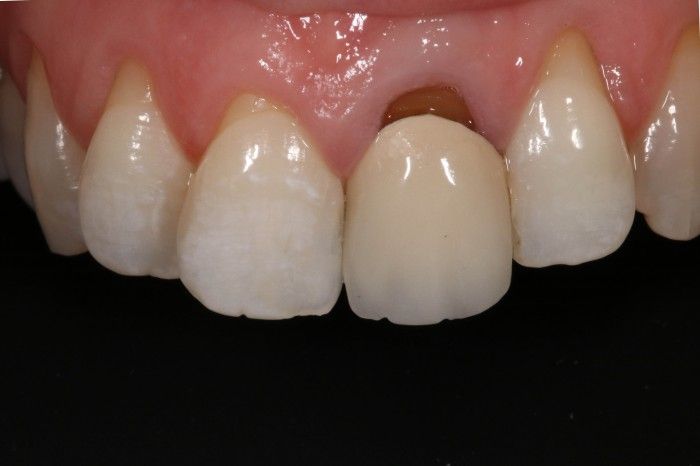Most dentists agree it’s better to save a tooth than to extract it. But for broken teeth and teeth that are heavily decayed, a tooth filling isn’t usually a good option to help restore the tooth. Instead, your dentist may prescribe a post and crown (also called a post core crown or a post crown). Post and crown is a restorative procedure used to treat a badly decayed tooth that lacks the strength or sufficient tooth structure to support a regular dental crown. Post crowns are often used after a root canal procedure is a way to restore a badly damaged tooth.
How the Post and Crown Procedure Works
Let’s start with a clear description of what the post and crown procedure is. Three components make up a post and crown — the post, the core and the crown. A dental post is a metal rod that provides an anchor for the core. The core is a filling material used to build up tooth structure and provide a basis for the dental crown. A dental crown is a porcelain restoration that looks like a tooth.
The Post
After you have a root canal (which often precedes the post crown procedure), your dentist will prepare you for your post and crown by removing some of the filling material from one of your tooth’s roots. Next, your dentist will enlarge and shape the canal to make room for the post. The post goes into your gums, but it’s designed to stick out just a bit above the gum line so the dental crown can attach to it.
The Core
Once your dentist cements the post into the canal, he or she will build-up and shape the core filling around the post to secure the base. Your post crown will always need a core to be successful, but a core can be used with or without a post to keep a dental crown in place.
Your dentist will decide based on the structure of your teeth. If you’ve had a root canal, a post core crown will most likely be used. A root canal involves removing the tooth’s pulp and nerves, leaving empty root chambers and too little tooth structure in which to create the core. If the pulp chamber is still intact, your dentist may be able to build up a core without the post.
A dental implant like the post and crown procedure is completed in two office visits, sometimes more. The first visit will include your root canal and the installation of the dental post. Your dentist may put a temporary crown over the post while it heals (which usually takes two to three months).
The Dental Crown
The second visit is installation of your dental crown. To create your dental crown, your dentist will take an impression of your teeth and send the impressions to a dental laboratory. After your restoration returns from the lab, your dentist will attach the crown to the core with cement to complete your post crown procedure.
Post and Crown Recovery and Care
You will be able to resume your normal daily activities, including eating and drinking, once the procedure is done. It’s normal to feel some sensitivity or pressure when biting. But if you think your post crown is causing you unnecessary pain, or it seems like the crown doesn’t fit right, or if it falls out completely, see your dentist immediately. Your post and crown may need to be refitted or remade.
Your discomfort should subside after a few days. Care for your dental post and crown in the same way you’d care for your natural teeth by practicing good oral hygiene and keeping your regularly scheduled dental checkups and cleanings. If you do this, your post crowns can last up to 15 years.

